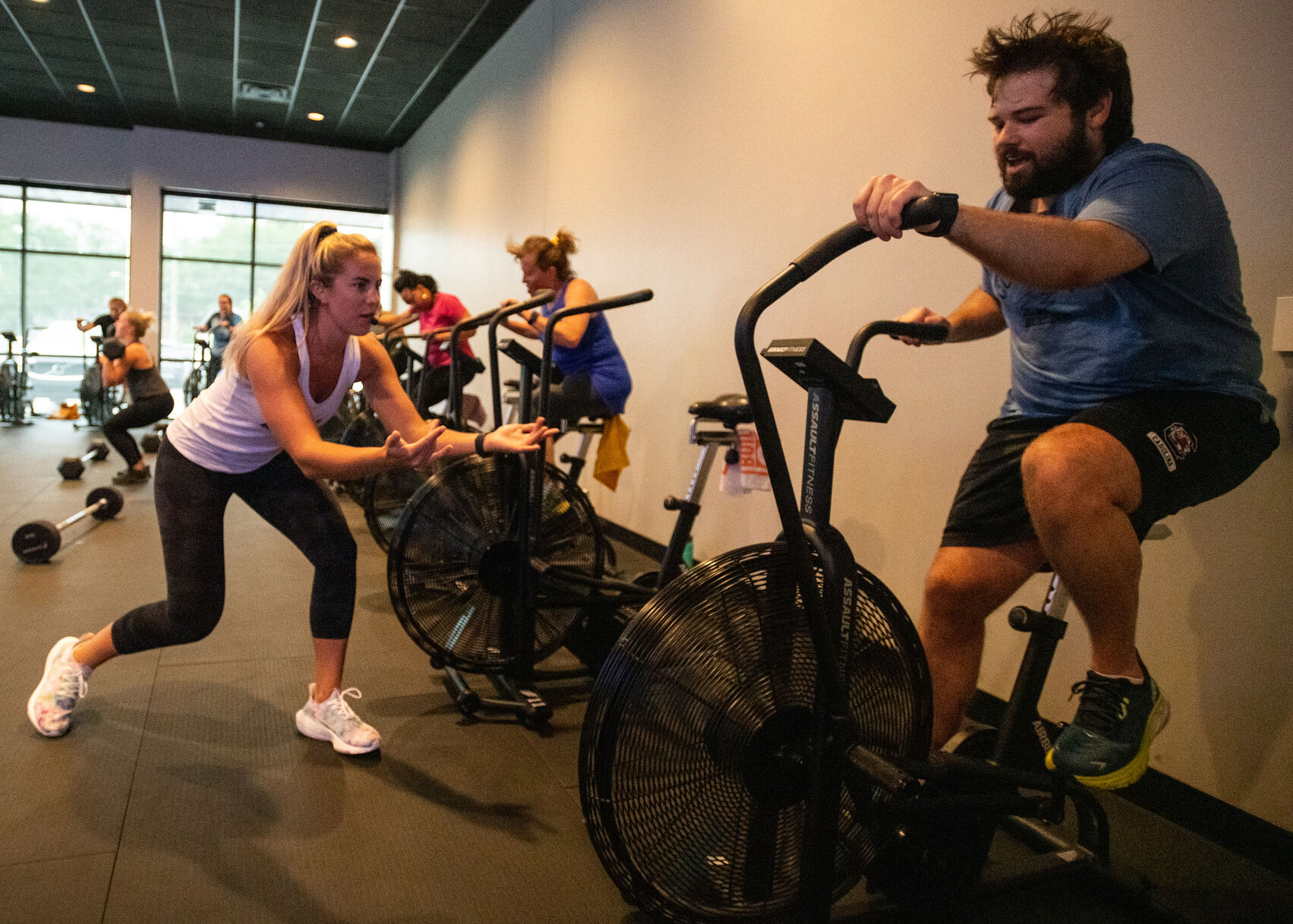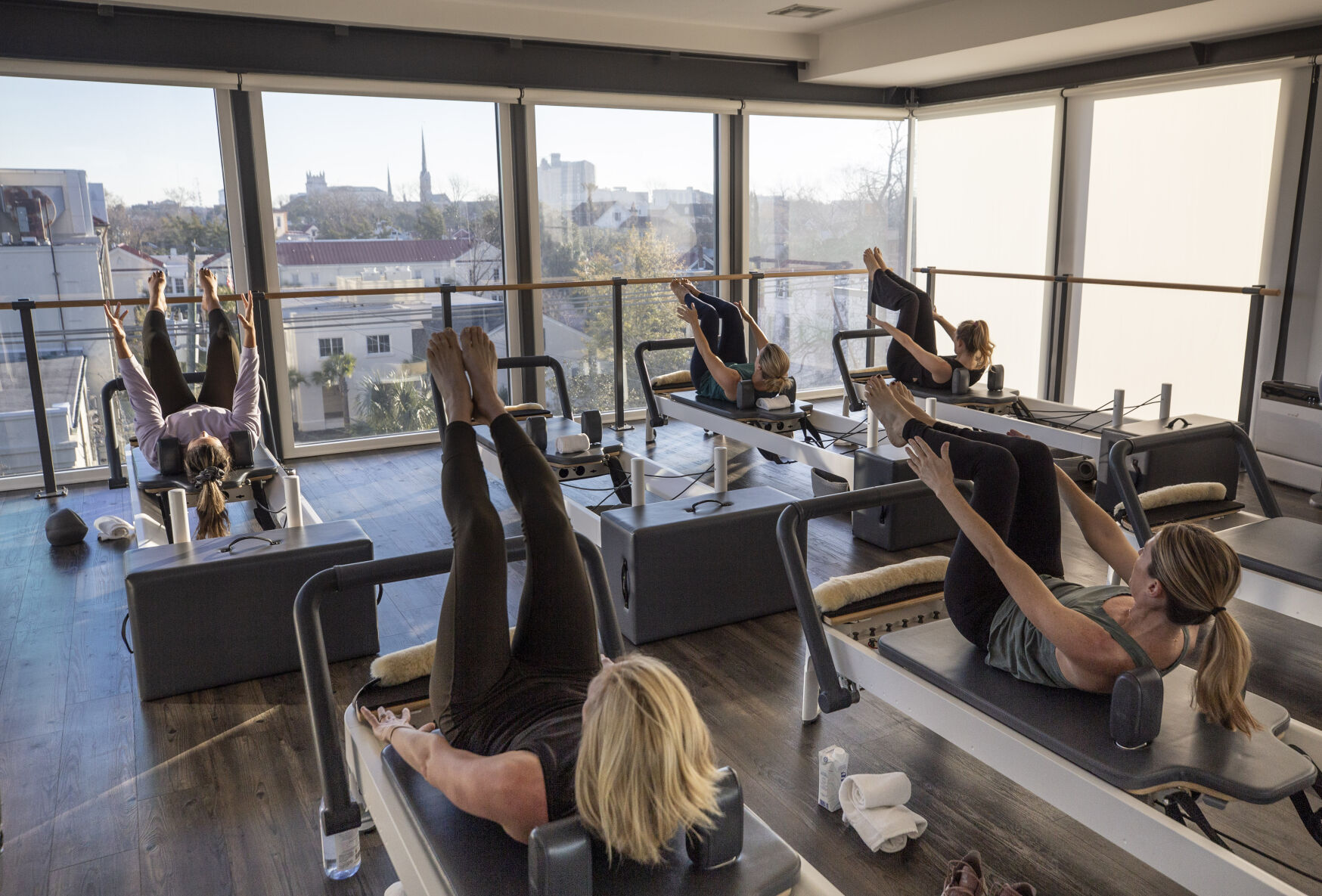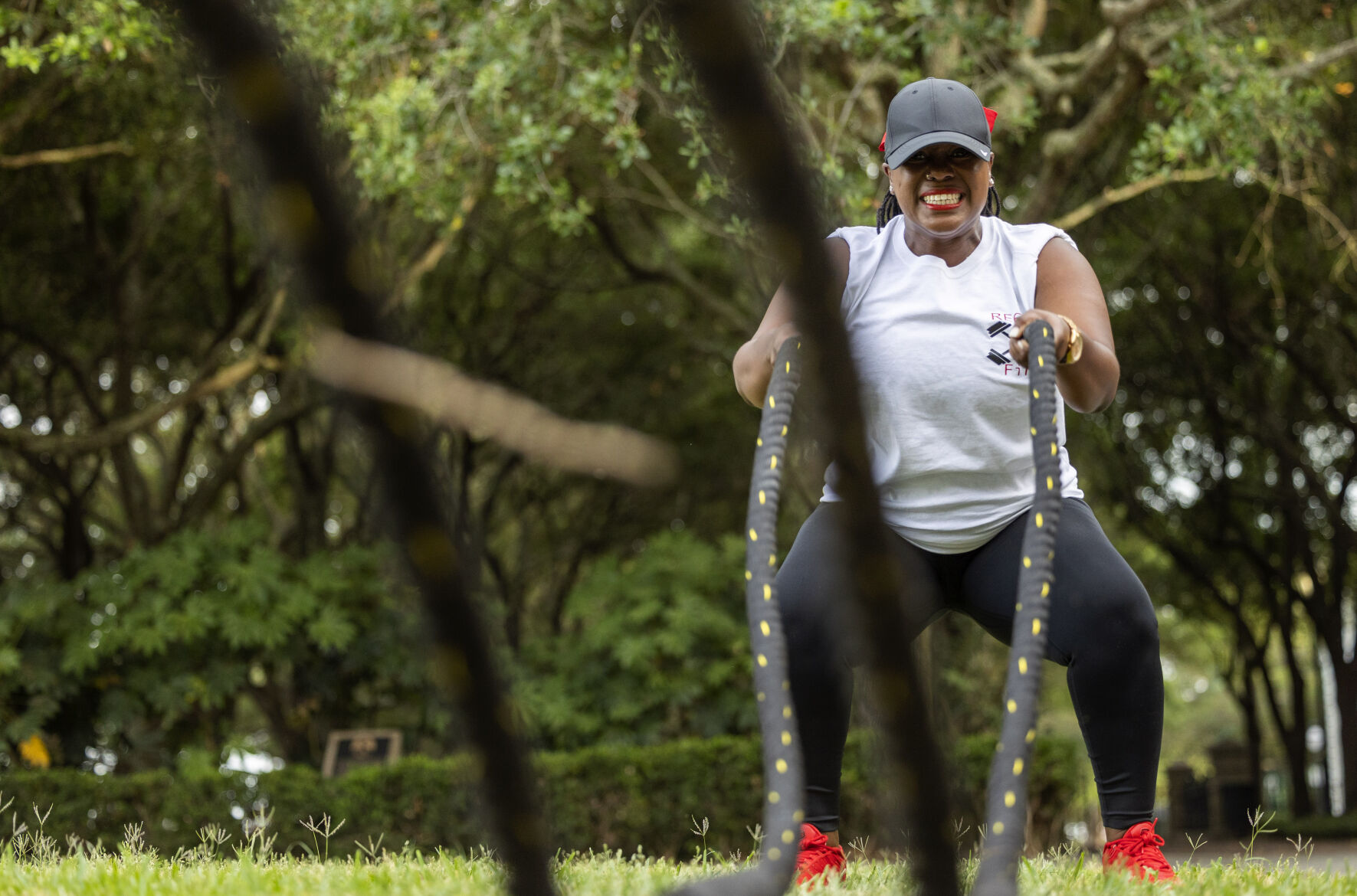Kaitlin Zobel-Epperson stood and faced the wall of mirrors while raising her right knee as eight cameras arrayed around her at different heights shot hundreds of frames per second.
Just off to her right, a monitor showed her image with a blue stick figure with its knee raised superimposed over hers, moving in precise concert with her.
The motion caption data and analysis won’t be used to create life-like special effects for a movie or video game, but to help patients in the real world recover from injury and improve health.
MUSC Health and Wellness Institute is one of a limited number of places to have the DARI Motion system and the only one in South Carolina to offer it for patients, although it is also used by Clemson’s football team, said Michael Sole, health and human performance manager for the MUSC institute.
Adapting motion capture technology originally geared toward the entertainment industry to health care goes back at least 20 years as researchers looked to harness it to study movement and disorders. The technology has also been deployed in limited ways in industrial fields, from construction to robotics to the automotive industry, according to a 2020 review in the journal Sensors.

Relationship manager Kaitlin Zobel-Epperson goes through a demonstration of motion-capture technology at MUSC Health and Wellness Institute on Wednesday, Feb. 16, 2023, in Mount Pleasant. The technology is used by the medical facility to help evaluate problems with gait, joints or muscle disorders. Gavin McIntyre/Staff
The advantage of the DARI system over previous motion capture technology is it does not require wearing an awkward suit or attaching a series of markers to different parts of the body to record the movement. It allows for a more free flow as subjects move through a series of poses and moves, known as plyometric exercises, that involve jumping, lunging, squatting and exploding from a position as the cameras record the movement in minute detail.
Even if some of that movement is awkward.
Zobel-Epperson, who works at the institute and agreed to be the subject for a demonstration, struggled through some of the poses, such as one that required her to shut her eyes and hold a leg extended behind her for 20 seconds.
“This is way harder than you think it is,” she said as she swayed in the pose, which looked like an awkward yoga position. But it can provide a lot of valuable information, Sole said.
“You’re trying to mimic when someone is walking and running when for that one small point in time you’re on one leg in that position,” he said. “That’s why we want to see how well you can hold yourself in that position, because that is a good determinant of how well you can walk. But we also use that number when we are looking at someone’s fall risk and how stable they are.”

The eight cameras are positioned to overlap somewhat while shooting so that each movement can be seen from at least four views. All of the data is fed into an algorithm that then compares it to a database of people who are the same gender, age, weight and height.
“It’s true apples to apples” comparisons, not an average, said Cokeitha J. Gaddist, director of the institute. The system can generate a number of reports, from the vulnerability of joints to athleticism to performance by age, depending on why the patient is being evaluated.
It has been most often used for athletes, said Sole, who was recruited to MUSC from the New York Yankees organization.
For Zobel-Epperson, for instance, it highlighted a lack of flexibility in her ankles. If she were primarily a runner, “that’s okay,” Sole said. “But if you told me she is a gymnast, that might be a problem because you are going to need a high level of mobility in your ankles.”

Manager of health and human performance Michael Sole leads Kaitlin Zobel-Epperson through a demonstration of motion-capture technology at MUSC Health and Wellness Institute on Wednesday, Feb. 16, 2023, in Mount Pleasant. The technology is used by the medical facility to help evaluate problems with gait, joints or muscle disorders. Gavin McIntyre/Staff
It can also be useful for the average person, and it can reveal some surprising truths. For instance, because of the way the hips are aligned, nearly everyone has a greater range of motion on the right than on the left, Sole said. You can see this in airports, when looking around at people standing and waiting: most are leaning slightly to the right, with the left foot a little forward and turned out.
“You don’t notice it until someone points it out,” Sole said.
Posture, positioning and balance are important as the system analyzes the data: how does the person carry their weight, does the person sway side to side or front to back slightly when holding a position?
“That’s where you start to put some of the pieces together,” Sole said. “We always want less sway. We want to stay in the center of ourselves as much as we can.”

The system provides precise data on all aspects of the body and movement much the same way a blood test in the lab would, Gaddist said. It ties in well with the orthopedic practices but also for Sole when he advises clients, she said. “It’s just movement,” she said, instead of chemistry. One of the key questions Sole asks non-athletes is what they do for a living, because that is where they spend most of their time and it can be the sources of their problems.
The approach offers an alternative people are looking for, he said. Patients might come to him and say the,y’ve ,had ongoing problems with a shoulder “and I am getting to the point where I don’t want to have surgery. What are some other options I can do?'” He can then provide clues about their movements and weaknesses and suggestions and exercises to improve it.
Looking at strength, joint vulnerability and particularly balance can also be important in evaluating patients for their propensity to fall, Sole and Gaddist said.

“We’re really excited about that because that will be able to help large groups of people but also help their families too,” Sole said.
It might apply to routine tasks by learning to avoid injuries that could have dire consequences down the road, particularly for older patients.
“If it’s something as simple as showing somebody how to pick up the laundry basket the right way, that could be a win because that person could have thrown their back out doing it, and now that person is going down a bad path,” Sole said.
For others, it could just be learning more about themselves to help them avoid nagging injuries, especially on the job or at play, while aging better. With the popularity of wearable technology that tracks health measures, like Fitbit and the Apple Watch, this can be more data the person can use to live better, Sole said
Think of it as investing in yourself, Sole and Gaddist said.
“You only have one body,” Gaddist said. “You want to keep it together as long as you can because when it goes, then guess what? You go, too.”










More Stories
Atlanta City Detention Center
Nutrition Can Speed Up Healing After a Traumatic Brain Injury
Proper nutrition could boost recovery from traumatic brain injury